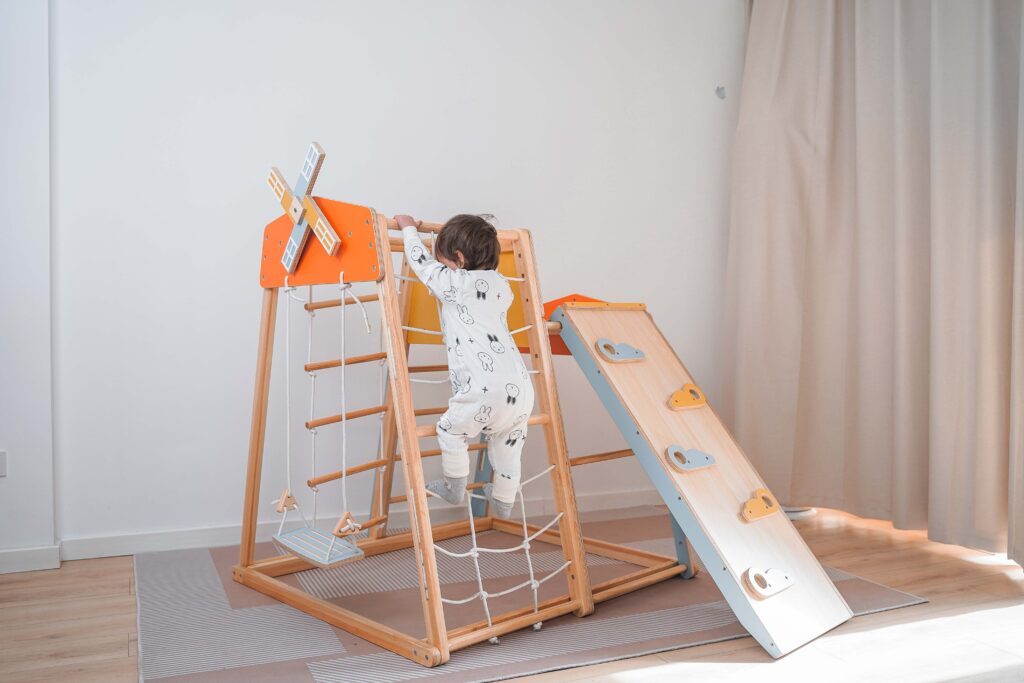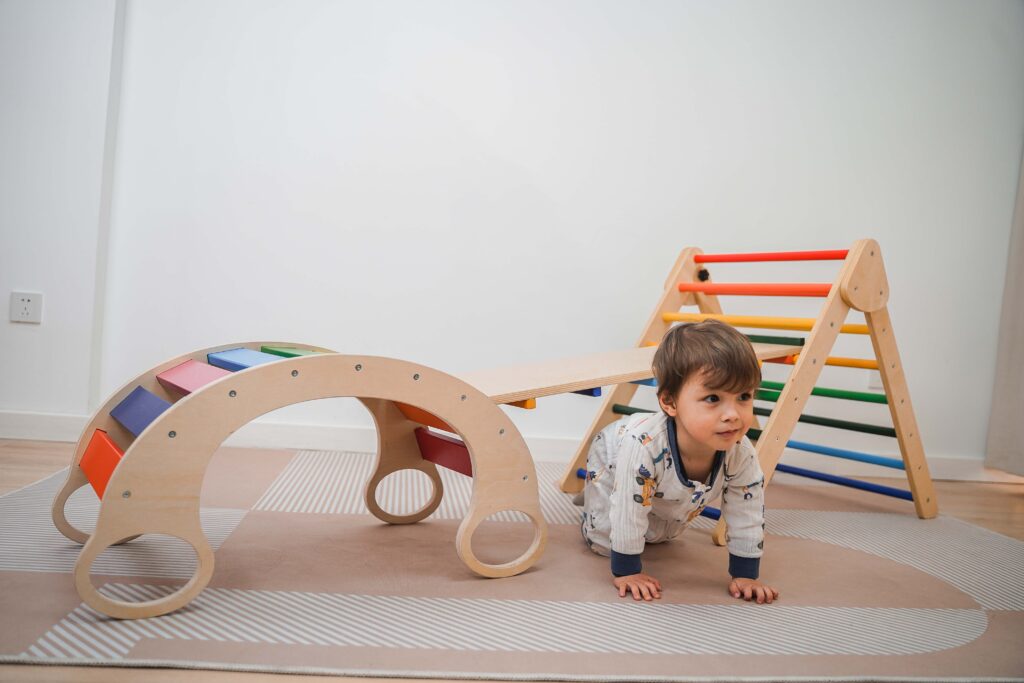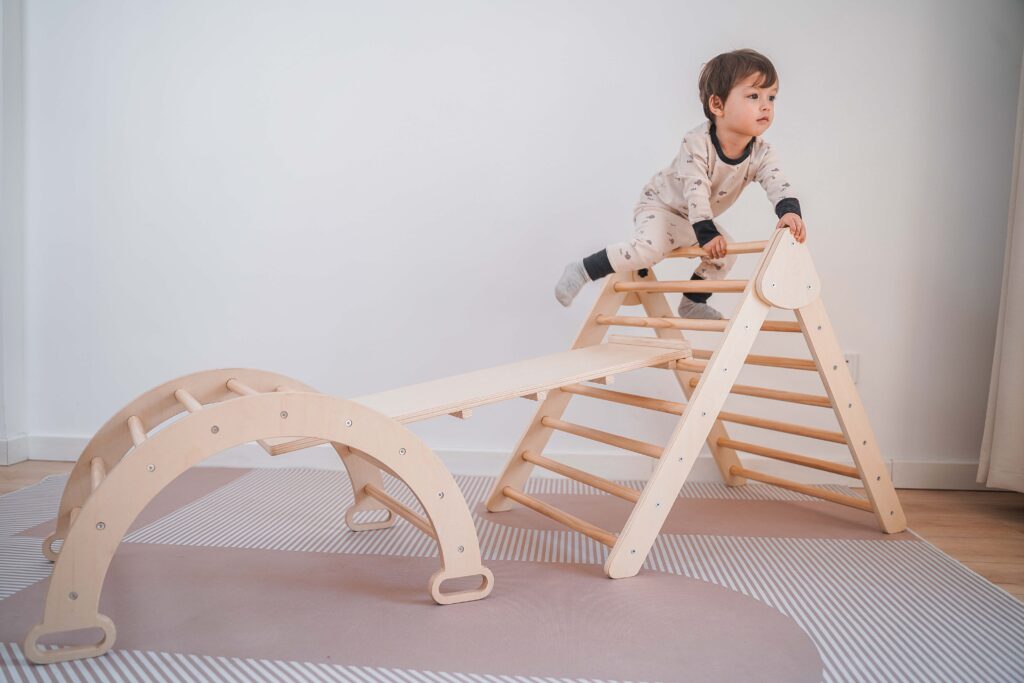Climbing frames are a popular play equipment for children, but what is the best age for children to start using them? Moreover, how do climbing frames impact children’s future development? This article will explore the optimal age for children to use climbing frames, and their impact on a child’s development, particularly from the perspective of the Pikler approach.
The Optimal Age for Children to Use Climbing Frames: According to the Pikler approach, children are ready to climb from the moment they can sit up independently. The Pikler approach is a child-centered approach to parenting and child care that emphasizes respect for the child’s autonomy and natural development. According to this approach, infants and toddlers should be allowed to move freely and explore their environment safely. Climbing frames can help children develop gross motor skills, balance, coordination, and body awareness.

The Pikler approach emphasizes that children should be allowed to develop at their own pace and should not be rushed or pressured to achieve milestones. Therefore, there is no specific age at which children should start using climbing frames. Some children may show an interest in climbing at a younger age, while others may not be interested until they are older. It is important to provide opportunities for climbing in a safe and supervised environment and to allow children to explore at their own pace.
The Impact of Climbing Frames on Child Development: Climbing frames can have a positive impact on a child’s development, particularly in terms of motor skills, cognitive development, and social development. Climbing frames help children develop gross motor skills such as balance, coordination, and strength. They also help children develop spatial awareness, problem-solving skills, and creativity.
Furthermore, climbing frames can have a positive impact on social development. Children can learn to take turns, cooperate, and communicate with each other while using climbing frames. They can also learn to assess and manage risk, which is an important life skill.

Conclusion: In conclusion, the optimal age for children to use climbing frames is not fixed, and children should be allowed to explore at their own pace. The Pikler approach emphasizes that children should be allowed to develop at their own pace and should be provided with opportunities to move freely and explore their environment safely. Climbing frames can have a positive impact on a child’s development, particularly in terms of motor skills, cognitive development, and social development. Therefore, climbing frames can be a valuable addition to a child’s play environment, as long as they are used safely and appropriately.


